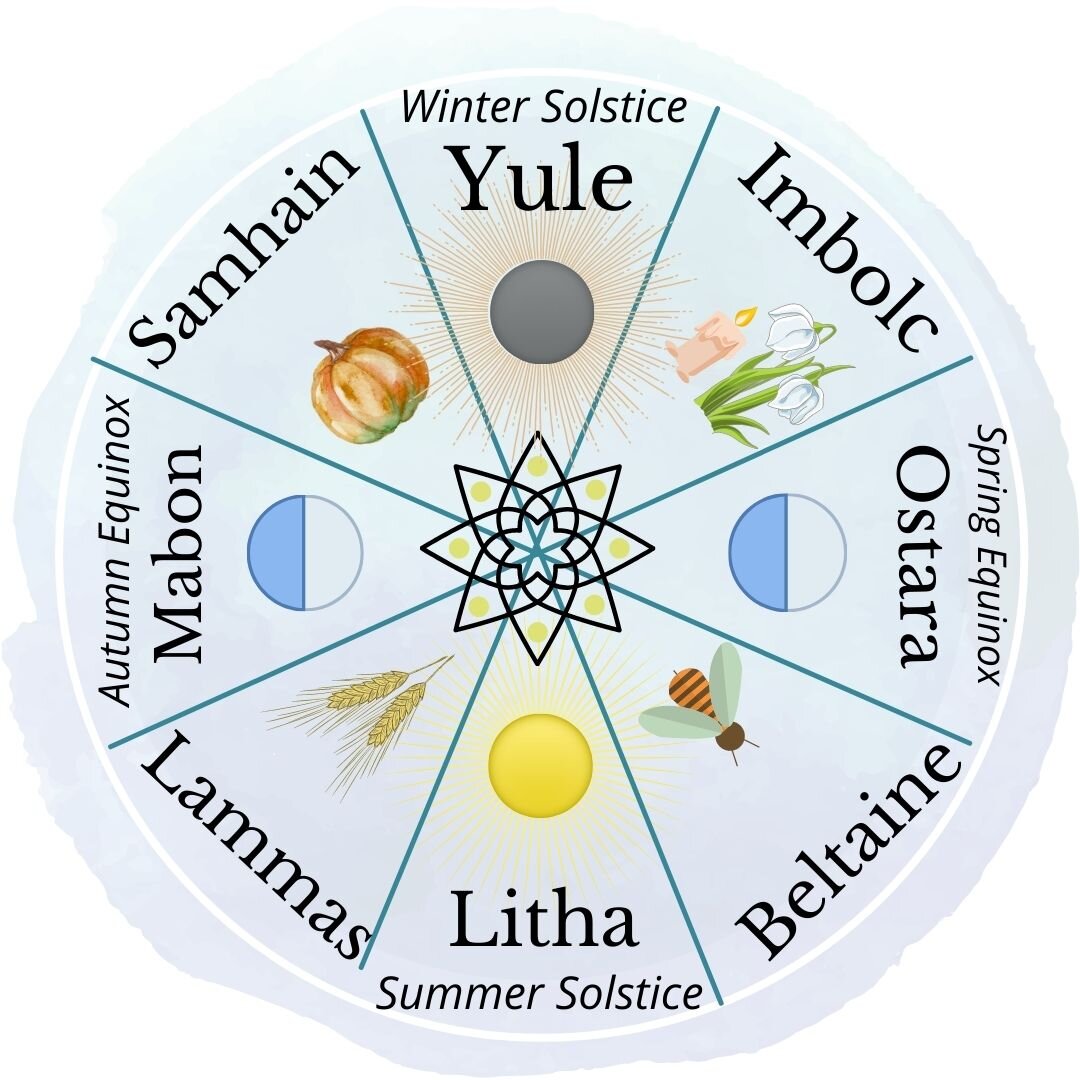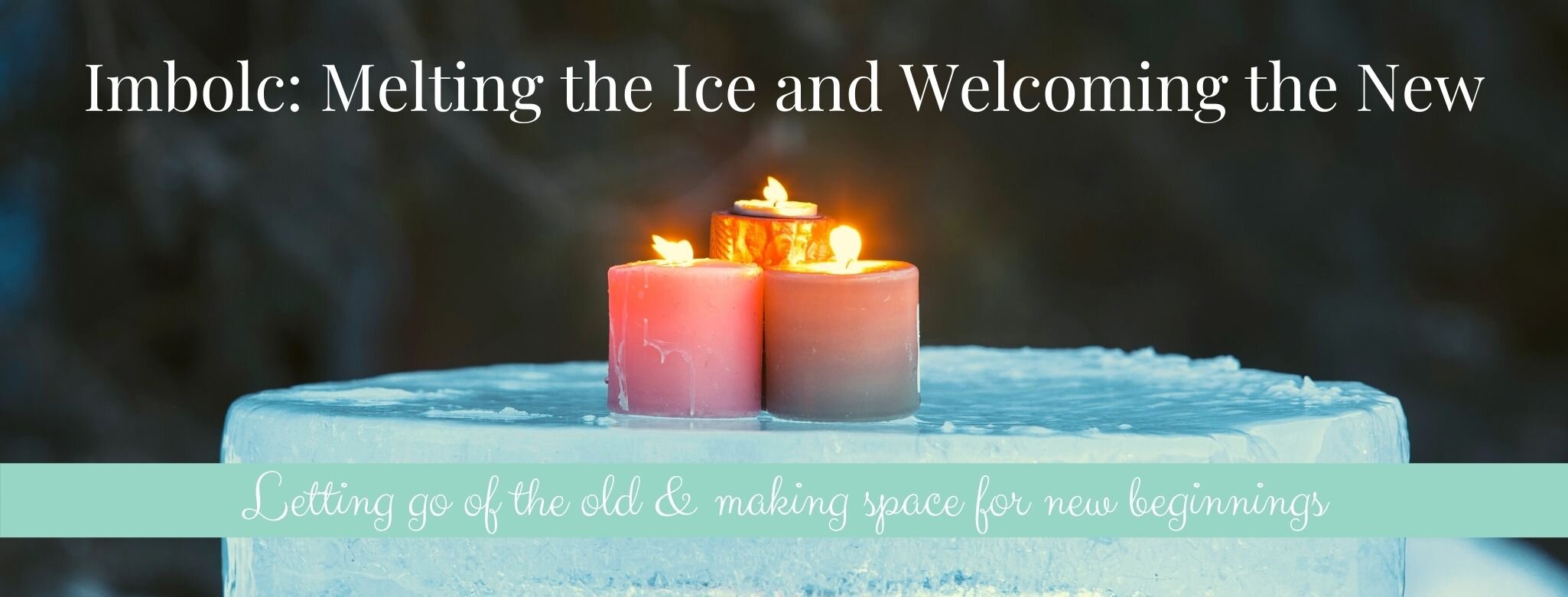Exploring the Wheel of the Year
We are excited to announce the launch of our Wheel of the Year series - eight workshops, which can be attended as a one-off or over the whole year, that incorporate nature intelligence, a return to our awareness, and the Work That Reconnects. Click here to find out more about the first (Imbolc on the 31st of January).
Words by Matthew Painton, Deep Adaptation Coach
The modern disconnect with nature is apparent all around us. One way that this shows up is as a misalignment with the seasons. We are constrained to try and be the same all year round, and especially in winter this can leave us disaffected and depleted. Modernity requires constant growth and progress, but this linear path is unsustainable, and beginning to unravel all around us.
The wheel of the year is a profound and embodied teaching about cyclical time, about expansion, contraction and rebirth, about constant flux and relentless change. By coming into deeper alignment with the seasons over the course of a year, we can deeply resource ourselves for the dark winter to come, and find new ways to embrace and affect change.
The wheel of the Year.
As with all things, the more you look the more you see. And there is much to notice and embrace when we start to look with curiosity at the wheel of the year. In essence it is about the cyclical, astronomical relationship between sun and earth, and the biological and cultural response. The wheel is a never ending circle, but it has eight stations, event markers or ‘festivals’, which punctuate the circle at significant moments - the solstices, the equinoxes and the four midway points between them when the seasons peak.
The wheel of the year has ancient, pre-christian origins as a way for agricultural and pre-agricultural peoples to predict, celebrate and align their lives and societies with the changing seasons. There is a rich body of mythology and ritual which comes down to us today as traditions and folklore. Some of the events have ancient Celtic names - such as ‘Imbolc’, as well as more recent Christian names - Imbolc was reinvented as Candlemass for example. But it is unlikely that any particular culture celebrated all eight festivals every year. The Wheel of the Year that we are looking at is a modern re-invention, without the religious and agricultural emphasis of earlier times. Today we have the lens of modernity and science, which on the one hand brings new depth and understanding to the astronomical cycles, but which also brings a profound social and spiritual disconnect from nature and our ‘natural selves’.
Also, today we can appreciate the global perspective - that midwinter for us, is midsummer on the other side of the planet. Pre-modern peoples did not really have this global perspective available to them. But as we look to the current global reality, many of us are aware of a planetary ‘unravelling’, which is unfolding because of a collective misalignment with the biosphere and with the sacred.
The global perspective invites us to become aware of much broader and deeper cycles of expansion and contraction, unfolding in deep time. The myth of eternal growth and progress, of linear time as an ‘eternal summer’, is unravelling, and many of us are anticipating a hard global winter, or massive contraction to come. And so we begin to contemplate the great wheel upon which all civilisations rise and fall, and the even greater wheel upon which the biosphere blossoms, collapses and reforms in geological time; cycles within cycles, wheels within wheels.
The wheel of the year marks eight points on the annual cycle. We can group these as two sets of four. The first set is the two solstices which are the peak and trough of the sun’s waxing and waning adoration for the earth, and the two equinoxes which mark the moments of balance between light and dark. These are regular, precise, cosmic events, the apogee and perigee, of nocturnal and diurnal imbalance, which cast the longest and shortest days, and the two midway, equinoctial moments where balance prevails.
Midway between each of those four cardinal events, lies the second set of four points on the wheel. This second set of four, known as the quarter days, are different in character, because they mark the peak of the terrestrial and biological response to the four cardinal, solar ‘provocations’.
Whether or not we pay them much attention, whether or not we align or misalign with the cycles, we are immersed within them, our bodies remember and respond, even if our lifestyles and culture forgets.
There are all kinds of health benefits to paying greater attention and seeking to align to cyclical time. The benefits may be physical, psychological and spiritual if we allow the seasonal moods to ebb and flow within us. It is to participate and align more fully with the tremendous biological project of capturing and transmuting the light of the sun into life, creativity and collective exuberance.
So the events we are planning will be rich yet simple, ancient and modern, intimate, personal, global and cosmic! The point is to come together to observe, explore, share, align, magnify, and celebrate the ebb and flow of the solar cycle and lifes creative response.
Most of us have a preferred season, where the prevailing weather, temperature and mood suits us best, and which tends to energise us, and make life easier. We might also have a season that we dislike or endure, which can at times feel uncomfortable or challenging, and which might deplete our energy and dampen our mood. This is the somatic response which all of us have, and in modern life, where we are supposed to perform the same all year round it can leave us fairly disregulated. Paying attention to the wheel of the year means we can anticipate what’s coming and constantly regulate our being so that we can prepare for, and appreciate the changes - even if at times we can’t really celebrate them. Noticing patterns, moods habits and triggers gives us the opportunity to change them.
But in addition to this personal aspect, many of us feel the modern disconnect with nature, and notice that nature is becoming increasingly disregulated because of human impact. The health and wellbeing professions are increasingly aware of the ‘restorative power of nature’, but nature is still mostly ‘consumed’ as leisure visits to the countryside for example, rather than embraced as a psycho-social, or sacred process of alignment and collective calibration.
As we become aware that the seasons are changing and becoming less predictable, and the weather is becoming more extreme, nature can become a source of anxiety, overwhelm and further internal disregulation.
In order to be more present and calm in the face of this accelerating global disregulation, additional skills are required, which Gwyneth and Matthew know can be found in the co-regulation of group processes. Processes which are designed to calibrate the deeply personal with the interpersonal, and the natural with the global, so as to come into a coherent space with which to meet the challenges of modernity and the increasing dissonance of this moment.
Our Wheel of the Year Workshops
Our workshops can be attended as a one-off, or regularly. There will be a cumulative benefit to attending them all, or several but if you attend just one, it will still be beneficial and insightful.
There is a lot of religious imagery, mythology and folklore both pre-christian (pagan) and Christian around the wheel of the year and the eight festivals, all of which can be interesting and insightful, but we have chosen to strip most of that away. How does the incredible flux in the sun’s available radiation affect us biologically, emotionally, psychologically, culturally? How can calibrating our inner being with seasonal change help us to connect more deeply with our own deeper nature, be more creative and expressive, more appreciative of the dark and the unconscious, and more resourced to meet the constant changes that are coming faster and faster?
Each workshop will be offered on a sliding scale from 30-60 GBP, with the option of a discount if you sign up to the entire year - sign up to all eight, and pay for only six.
First up..
Imbolc workshop, Sunday January 31st from 1-5pm UK time - sign up here!


